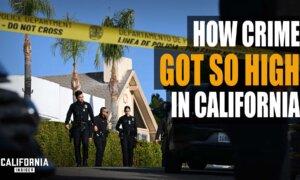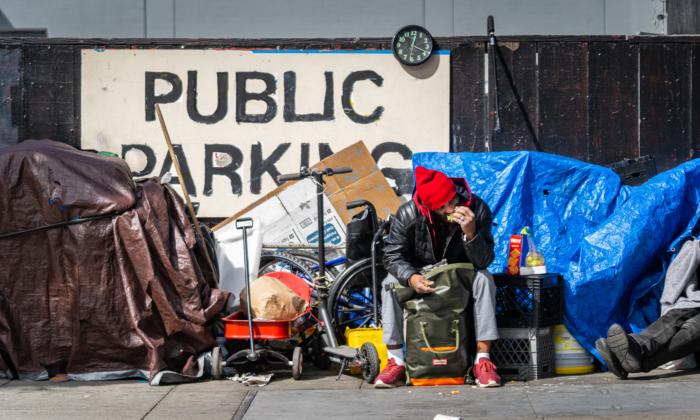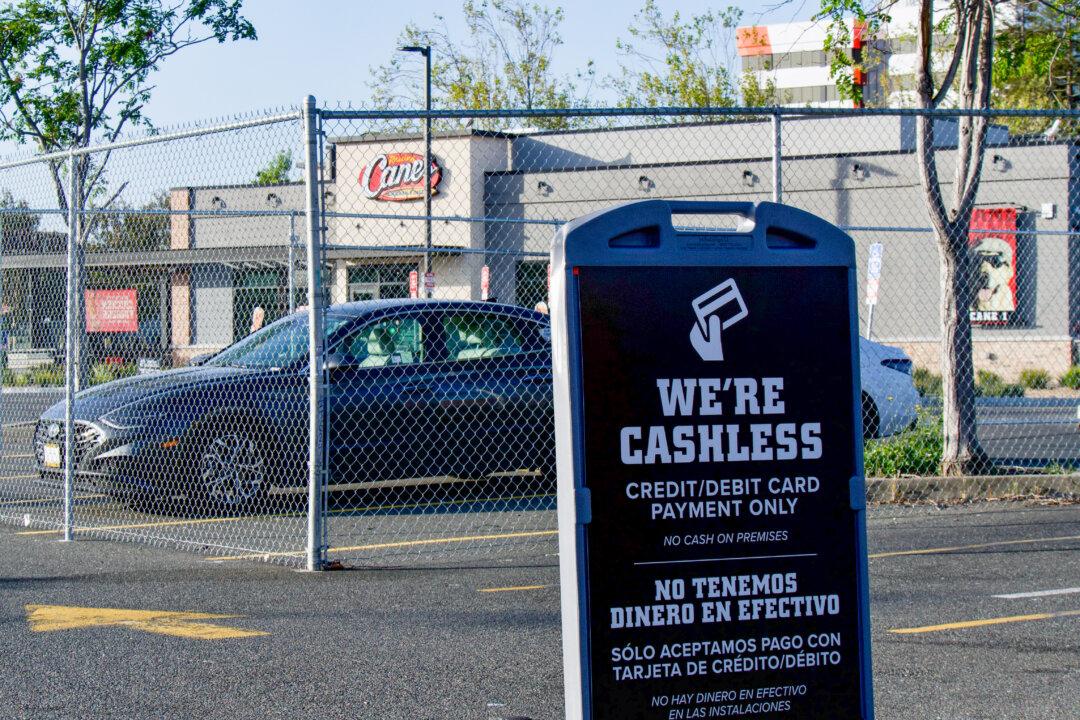Although spending on law enforcement has increased significantly since the early 1990s, the number of reported crimes solved by arrests has dropped to historic lows, according to California Department of Justice data.
Hovering at about 13 percent for each year between 2020 and 2022—the latest year being the most recent for which data are available—the so-called crime clearance rate for all offenses is the lowest ever recorded in the state and has declined by 41 percent since the annual average of 22 percent from the early 1990s.
Police funding statewide increased by about 46 percent to about $25.5 billion in 2022, according to a recently released report from the Center on Juvenile and Criminal Justice—a research and education advocacy nonprofit based in San Francisco.
“Law enforcement agencies are not being hampered by decreased funding and personnel,” the report reads. “These trends cast doubt on whether increasing police budgets and staffing would solve more crime.”
As such, the study suggested that a lack of resources is not the problem.
“The key finding of this report is that police are consuming more public resources than ever before but solving fewer crimes,” researchers wrote in the report’s executive summary published on Feb. 13. “Billions of dollars in additional spending for police has corresponded with decreasing effectiveness.”
The percentage of crimes solved dropped across most categories of crime, including aggravated assault, burglary, and rape. Clearance rates also dropped precipitously for vehicle theft, larceny, and other property crimes.
Although the statistics statewide show a decline in both the number and percentage of crimes solved, the numbers vary by jurisdiction—but 20 of the 22 largest counties solved fewer crimes.
Serious offenses, including felonies, were solved at a rate of 26 percent in the agricultural central valley county of Tulare and about 21.5 percent in Sonoma County in the far North Bay, the best rates in the state.
On the other end of the spectrum, Alameda and San Francisco counties’ 5.8 percent and 6.7 percent clearance rates, respectively, are the worst in the state. Alameda’s numbers are affected by the 1.5 percent of serious offenses solved in Oakland—by far the lowest crime clearance rate of all cities in California.
Felony property crimes, including grand larceny and motor vehicle theft, saw the largest decline in the percentage of solved cases across the state, falling by 59 percent, and violent felonies, such as rape and aggravated assault, were solved at a clip 14 percent below early 1990s levels.
About 439,000 violent and property felonies, amounting to 22.3 percent of reports, were solved by law enforcement agencies in 1990, and 144,000 of the same crimes were solved in 2022, equaling less than one in seven serious offenses solved by arrest.
During the same period, arrests for drugs and other misdemeanor crimes declined by 61 percent, from more than 1.6 million in 1990 to less than 625,000 in 2022. No clearance rates are calculated for such crimes, as the number of reports is not available in the justice department data.
The state’s population has increased by about 10 million people over the past 30 years, and law enforcement staffing has grown by 45,000, according to the study.
Considering that reports of all serious offenses dropped by 57 percent from the early 1990s to 2022, researchers concluded that factors—yet to be determined—besides staffing levels are affecting law enforcement’s ability to solve crimes.







